Shanghai Noodles (Cu Chao Mian)
This post may contain affiliate links. See my disclosure policy.
These Chinese fried noodles feature thinly sliced pork, cabbage, garlic, ginger, green onions, and a sauce that will make your mouth water! This Shanghai Noodles recipe is Chinese street food at its best. Quick and easy to make, it’s perfect for a weeknight meal.
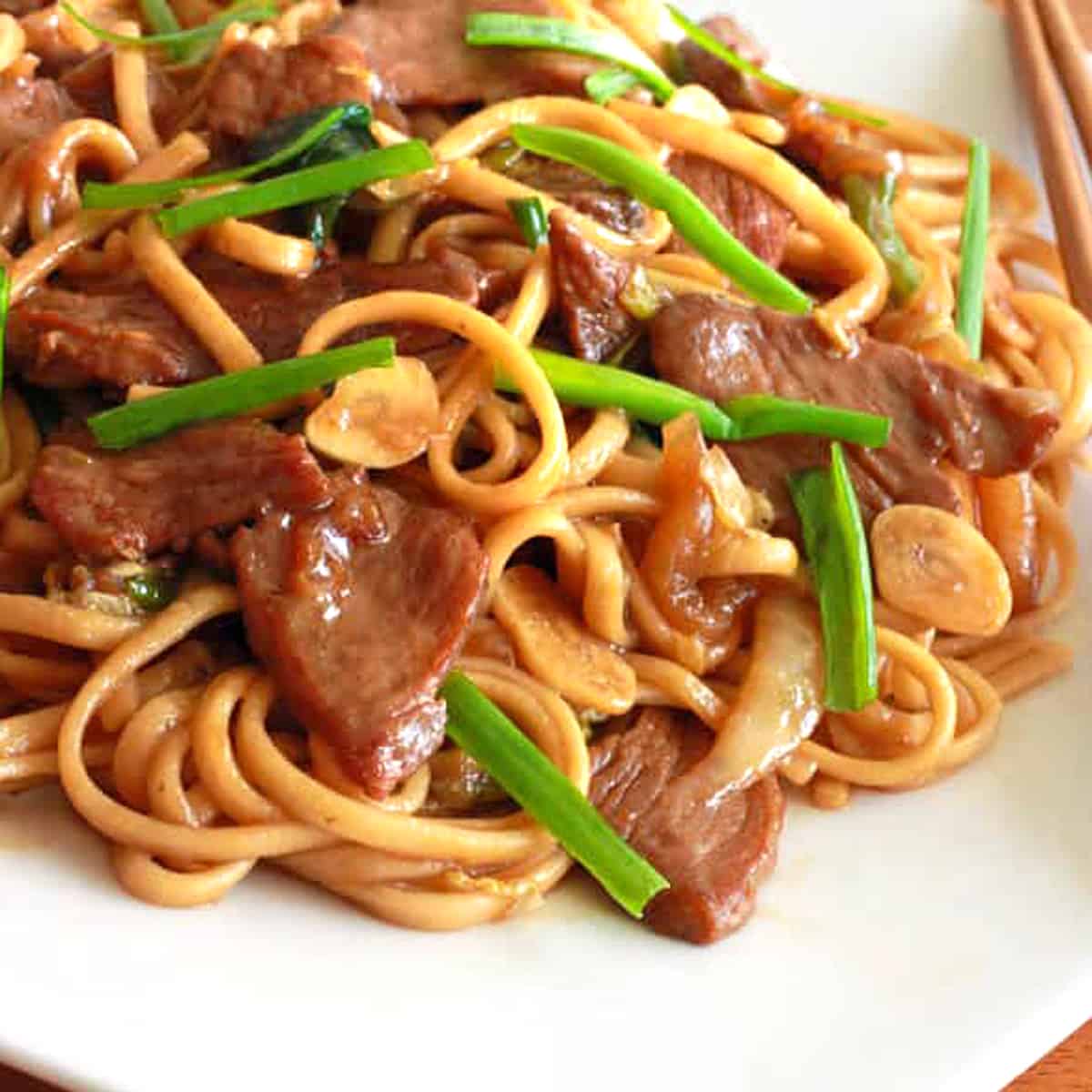
Quick and Easy Shanghai Noodles
Shanghai, China. The most populated city in the world. Bustling with tourists, it is also a major port town, financial hub, business and commerce center, and cultural hotspot. Amidst the ever-changing dynamics of this global city, one thing remains constant: Noodles are the way of life.
Plump, handmade noodles are the preference and have been for centuries. Watching Chinese noodle-makers at work in food stalls along the streets of Shanghai, pulling dough and chopping with cleavers at lightening speed is truly awe-inspiring. And whatever variations of noodles are served, the most popular remain ones based on rich brown sauces such as the one featured in this authentic recipe. Not encumbered with a lot other ingredients, the central feature of this dish is, of course, the noodles. Simple, quick, and satisfying…just what a large city dweller needs.
These Shanghai Noodles are fast, easy, and positively mouth-watering. I’m confident you’re going to love them as much as we do!
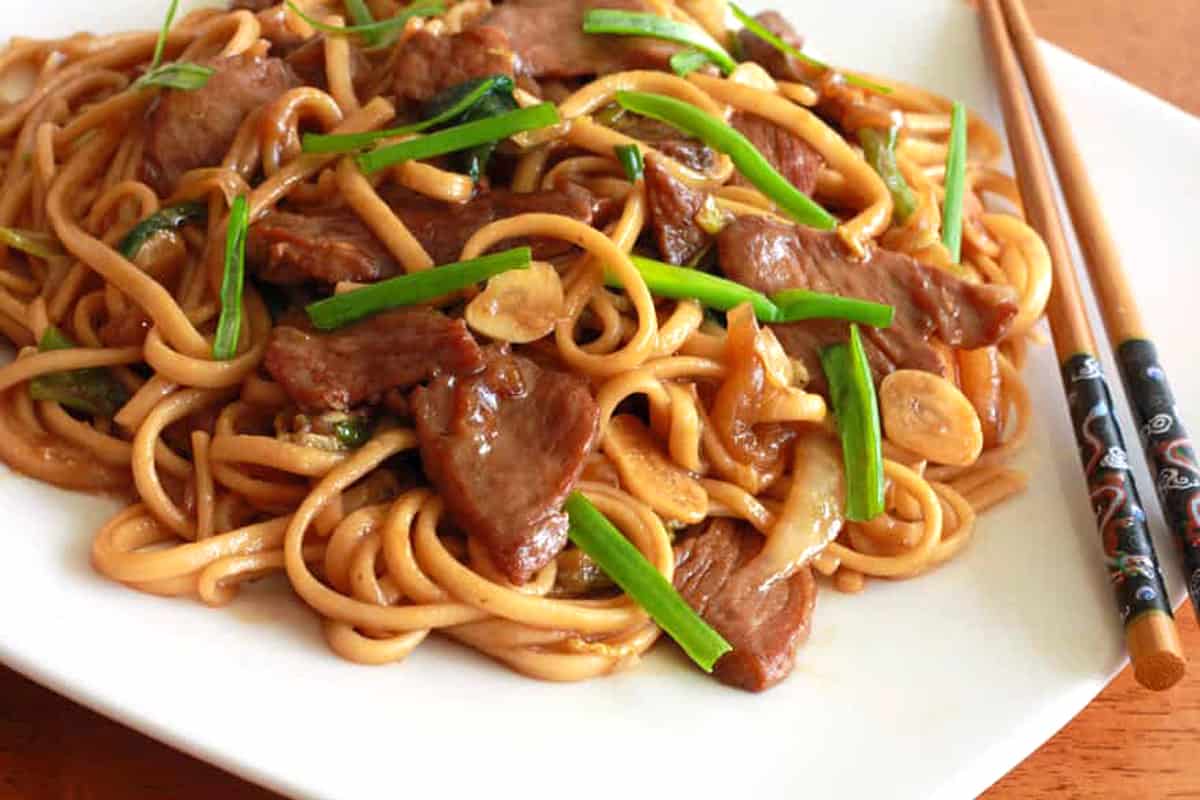
Shanghai Noodles Recipe
Let’s get started!
Shanghai Noodles use pork, but you can substitute chicken, beef or shrimp. Marinate the pork for at least 10 minutes.
Cut up the green onions and Napa cabbage (keeping the green parts and firmer white parts separate. They’re going to be cooked separately so the more tender parts aren’t over-done). Thinly slice the garlic.
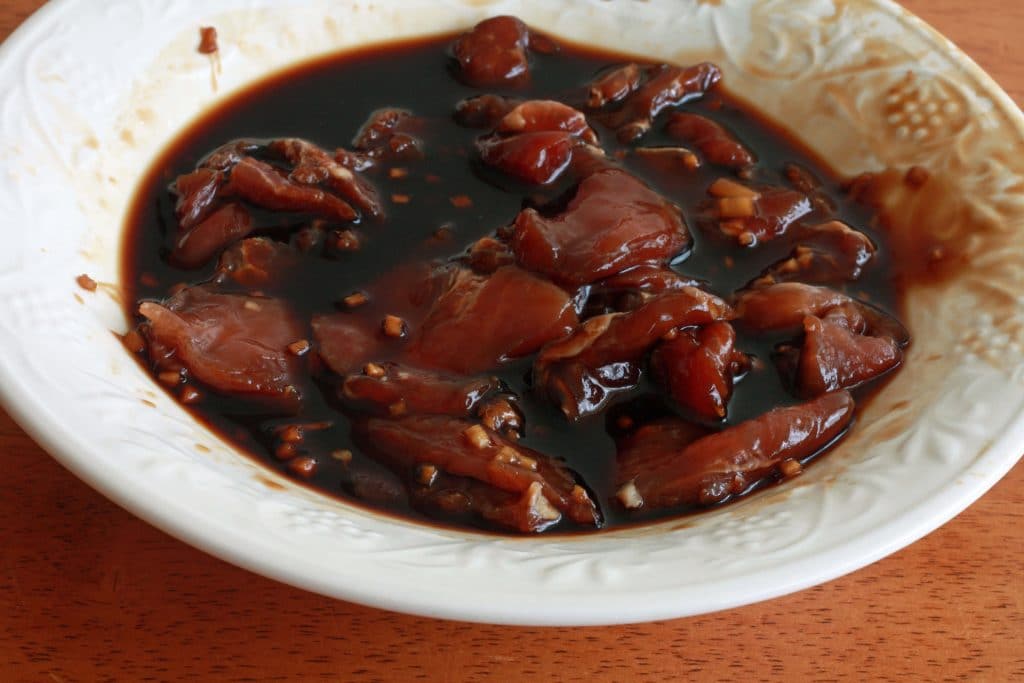
Fry the pork in a wok or heavy pan over high heat for a couple of minutes, setting the reserved marinade aside.
I like to use avocado oil for high heat cooking. Unlike most other oils like vegetable and peanut oil that oxidize at lower heats (oxidation = free radicals/unhealthy), avocado oil has a very high smoke point.
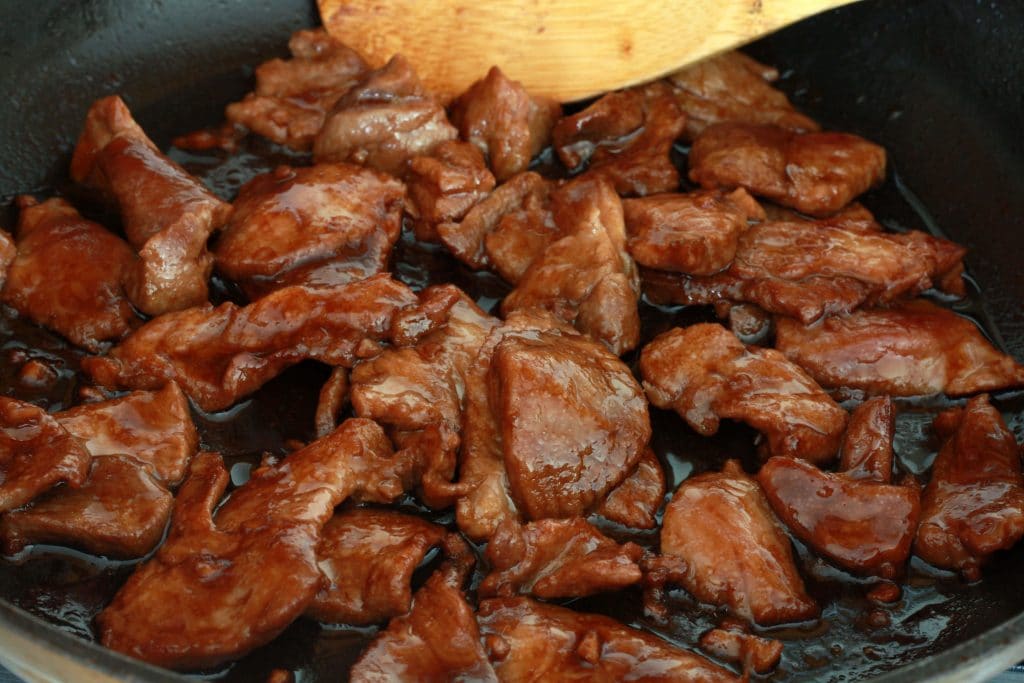
Remove the pork and set aside. Next cook the white parts of the green onions and cabbage along with the garlic for about 30 seconds or until tender.
Add the green parts of the cabbage and green onions and cook for another 30 seconds.
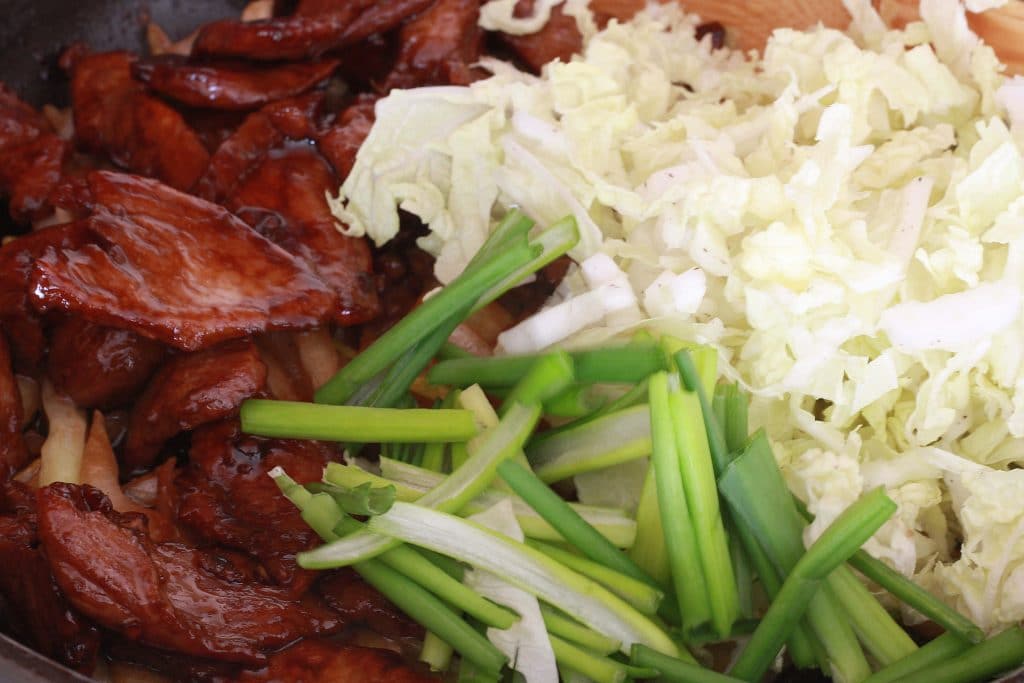
Return the pork to the pan along with the reserved marinade, the sesame oil, and the chicken stock/cornstarch mixture.
Stir to combine and cook for 30 seconds.
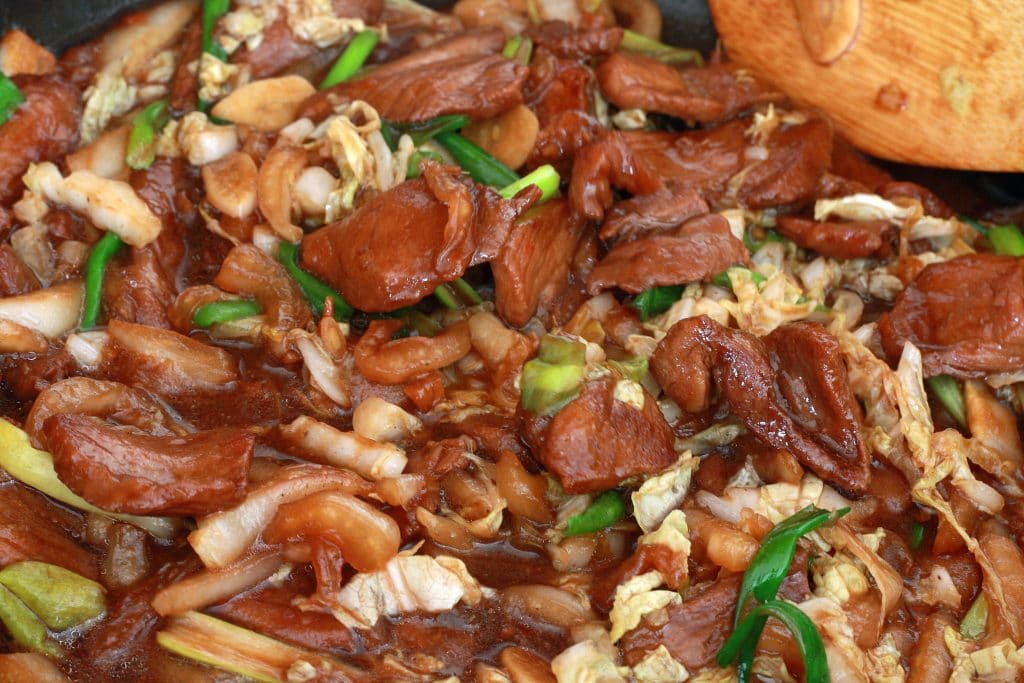
Add the cooked noodles and stir to coat.
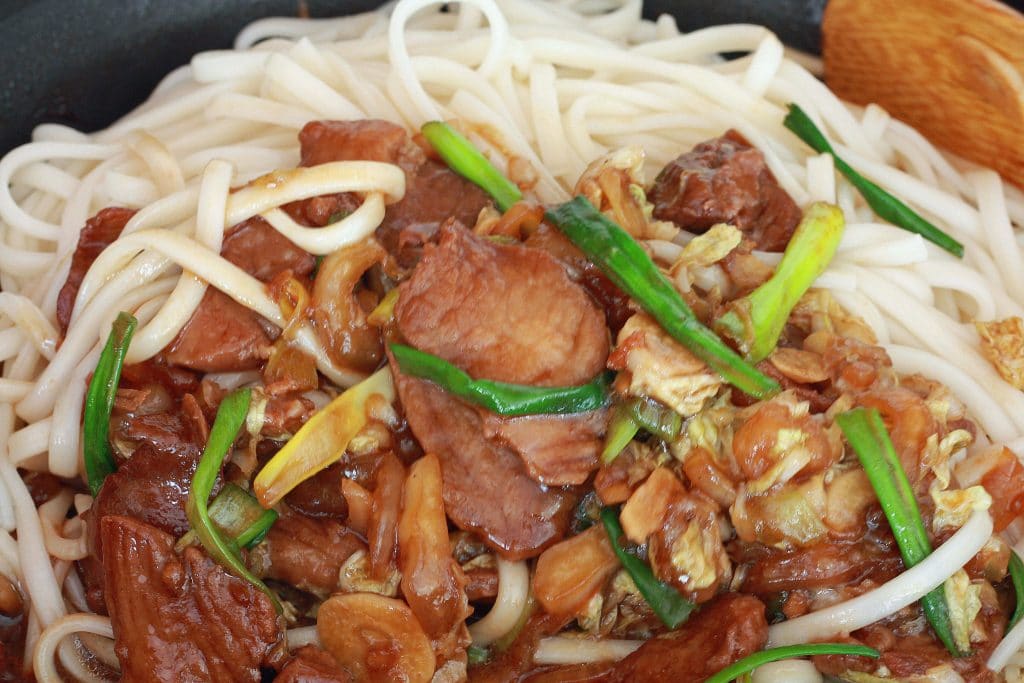
Serve immediately.
Enjoy!
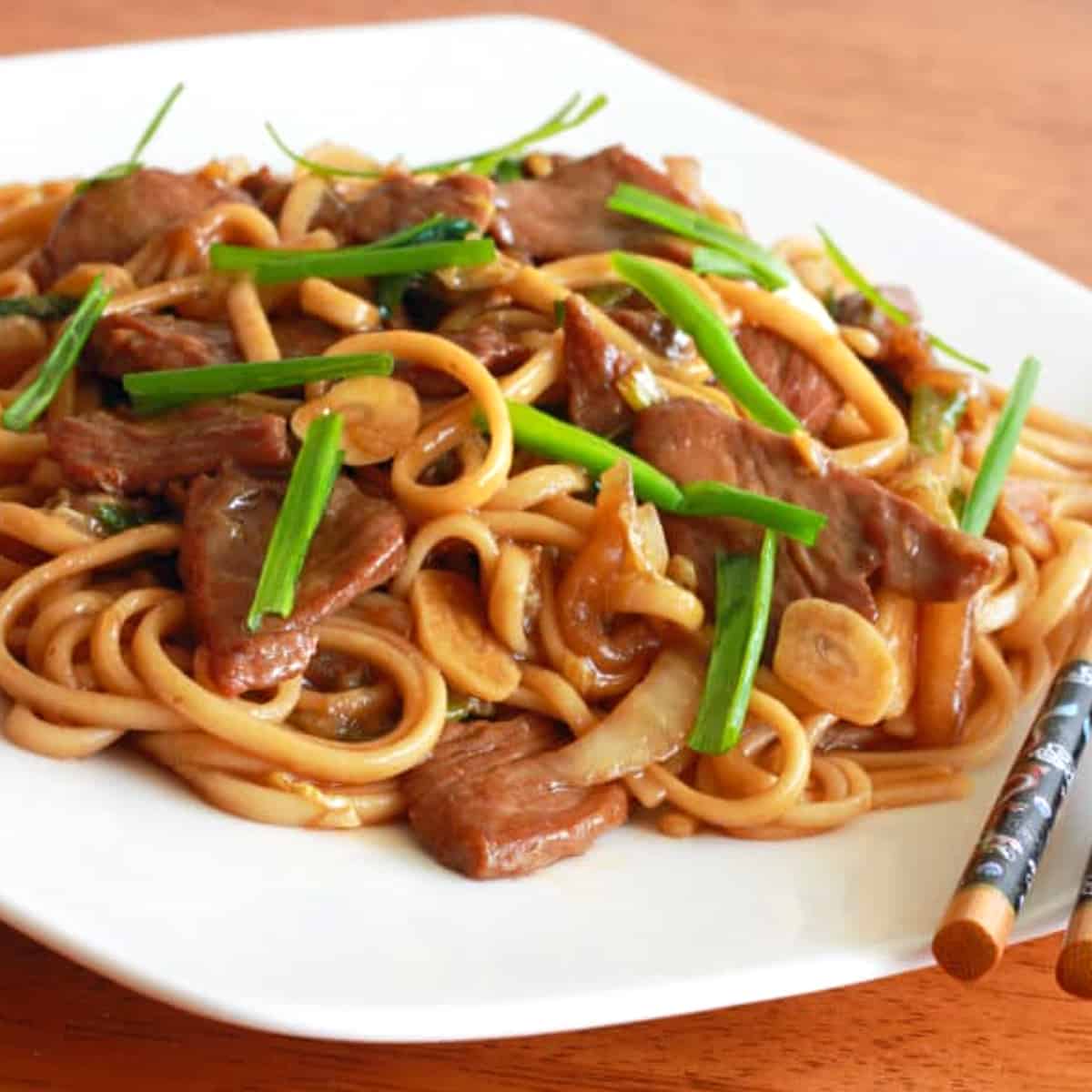
For more delicious Chinese takeout recipes, be sure to try my:
- Mongolian Chicken
- Mongolian Beef
- Egg Foo Young
- Biang Biang Noodles
- Orange Chicken
- Kung Pao Chicken
- Beef and Broccoli
- General Tso’s Chicken
- Sweet and Sour Chicken
- Orange Beef
- Sesame Chicken
Save This Recipe
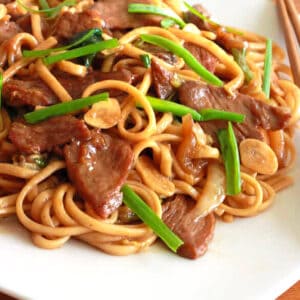
Shanghai Noodles (Cu Chao Mian)
Ingredients
- 1/3 cup dark soy sauce (see Note)
- 1/4 cup oyster sauce
- vegans: use hoisin sauce
- recipe for homemade hoisin sauce
- 2 tablespoons sugar
- 1 1/2 tablespoons fresh ginger , finely minced
- 1 lb pork tenderloin , sliced thinly (vegetarian/vegan: use tofu following directions from Kung Pao Chicken recipe at https://www.daringgourmet.com/2013/01/08/30/)
- 1 lb thick round Chinese egg noodles (can substitute Japanese udon noodles) , cooked according to package instructions (fresh noodles are even better, in which case cut the sauce in half because the fresh noodles weigh more) (vegans: use wheat noodles)
- 2 tablespoons high heat cooking oil
- 4 cloves garlic , sliced thinly
- 6 green onions , cut into 1-inch pieces and then julienned lengthwise (keep green and white parts separate)
- 1/2 head Napa cabbage , thinly sliced (white and pale green parts kept separate)
- 1 1/2 tablespoons cornstarch dissolved in 1 cup chicken stock
- 1 1/2 tablespoons sesame oil
- Ground white pepper to taste
Instructions
- To make the marinade, combine the soy sauce, oyster sauce, sugar and ginger and stir until the sugar is dissolved. Place the pork in the marinade and let sit for 10 minutes. Drain and reserve the marinade for later.
- Heat the oil in a wok or heavy skillet on high heat and fry the pork for one minute or until done. Remove the pork and set aside. Next fry the white parts of the cabbage and green onions along with the garlic for 30 seconds or until tender. Return the pork to the pan along with the reserved marinade, the sesame oil, chicken/cornstarch mixture and the green parts of the cabbage and green onions. Cook for 30 seconds. Add the noodles and stir until combined. Add white pepper to taste. Serve immediately.
Notes
Nutrition
Originally published on The Daring Gourmet on January 23, 2013



















Easy to do. Delicious noodles. My husband love it :)
Fantastic, Katie, thank you!
Used udon noodles, sliced pork cops, and minced garlic from a jar. Fantastic! Hubs and son devoured it. Glad I served myself first!
Fantastic, Tara, thank you!
This was amazing. I made it last night as the bf has a strong love for Shanghai noodles. They were a huge success. Thank you so much, will definitely be making again!
Awesome, Traci, I’m so happy to hear that, thank you!
Is the taste of the oyster sauce strong in this dish? I haven’t cooked with oyster sauce brfore and don’t have any at home. Just want to know if it is really strong before I buy any. My mom isn’t a fan of the fishy taste.
Hi Judah! I can’t stand strong fishy tastes either and no, the flavor of the oyster sauce isn’t strong at all. Alternatively you can use hoisin sauce which is seafood-free and has a really great flavor as well.
This was really good. Just wondering….can I freeze it after it is made? It made a lot more than we could eat. I used rice noodles and it is my first time using those so I am not certain if this will freeze well.
Hi Corrie, so glad you liked it! Rice noodles, like most gluten free noodles, generally don’t freeze very well. Once thawed their texture becomes mushy. I would just refrigerate it for up to 3 days and finish it off.
I’ve had this recipe sitting on my Pinterest for quite a while and a few weeks ago, the pork was on sale so bought it.
I decided to make it tonight. I’ve only made one other Asian dish before and I did not grow up eating this type of food so I was pretty intimidated. It was easier than I thought, I think I used too much chicken broth because it seemed too soupy, but other than that it was very good and even better, my husband had seconds! Tasty and simple. Thanks!
Hi Amy, I’m glad it was a hit – and I’m especially glad to hear that you stifled your fears and made the dish, hooray! If it was too soupy it sounds like you may not have let the broth/cornstarch mixture simmer quite long enough to allow it to thicken. Next time you’ll have it down like a pro :) Thanks so much for the feedback! Best, Kimberly
peanut oil has a 33% polyunsaturated profile, more than avocado, but hardly in the realm of of sunflower or corn oil. unrefined avocado does not have a 480 F smoke point from all the sources that I’ve looked at. And I wanted to love avocado oil, its great when freshly opened, but I’ve found it develops off flavors much more quickly than my other oils. I do not like to cook at high temperatures often, oils aside, high temperature cooking of either carbohydrates or proteins create carcinogens, regardlless of oil used. There’s just no getting around that.
Your first statement is correct – which is why peanut, sunflower and corn oil really should all be avoided along with a host of other oils. Refined avocado oil’s smoke point: Again, I’m not sure what sources you’re referring to, but both refined and unrefined avocado oils have high smoke points. Avocado oil is quite exceptional in that respect. In my experience it’s virtually flavorless and keeps well, but as for its freshness, I would imagine that varies from brand to brand. I’m currently using the Chosen Foods brand that is sold at Costco for about the best price I’ve found. As for high-heat cooking in general, I agree, we don’t do it very often either (eg, deep-frying). On a side note, the fact is the best “oil” for high-heat cooking is animal fat/lard. We now know (and the FDA has finally squeaked out a sheepish acknowledgment to the fact) that saturated fat isn’t the villain it’s been made out to be for many decades, but it’s still going to take a while before our food culture and grocery stores reflect that.
actually, only avocado oil that has been highly refined can be used in high temperature frying, unrefined (which is where the antioxidants are) has a much lower smoking point and is only suitably used in salad dressing.
That is incorrect. Both refined and unrefined avocado oil have an incredibly high smoke point (unrefined: 480 degrees, refined: 520 degrees). It’s an excellent oil for high heat cooking, whether refined or not.